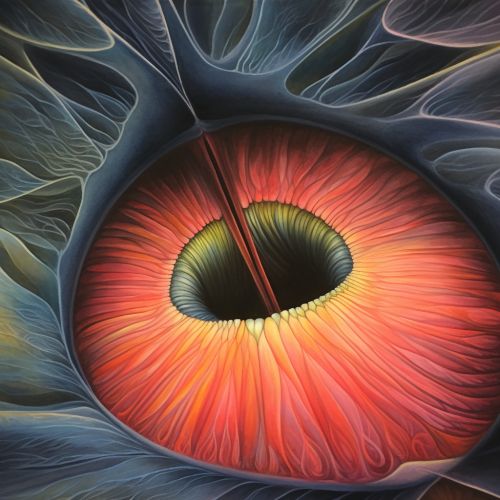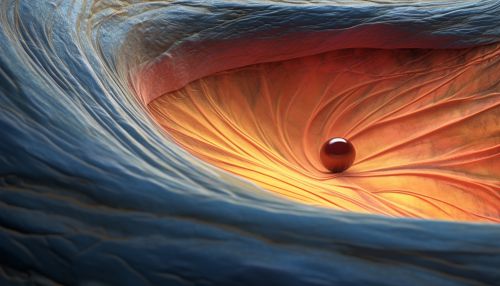Basal body
Overview
A basal body (also known as basal granule, kinetosome, or blepharoplast) is an organelle formed from a centriole, and a short cylindrical array of microtubules. It is found at the base of a eukaryotic undulipodium (a structure found in cells that appears to 'undulate', such as a flagellum or cilium) and serves as the nucleation site for the growth of the axoneme microtubules. Basal bodies are structurally identical to centrioles.


Structure
The basal body is a cylindrical structure approximately 500 nm long and 200 nm wide. It is composed of nine triplet microtubules arranged in a circular fashion. Each triplet consists of one complete A tubule and two incomplete B and C tubules. The A and B tubules extend into the axoneme of the cilium or flagellum, forming the characteristic '9+2' arrangement of microtubules. The C tubule terminates at the basal body.
Function
The primary function of the basal body is to provide a template for the formation of the axoneme, the core of the cilium or flagellum. The basal body anchors the cilium or flagellum to the cell and ensures its correct orientation. It also plays a role in the assembly and disassembly of the cilium or flagellum, which is crucial for cell motility and signal transduction.
Formation
The formation of a basal body is initiated by the duplication of the mother centriole, a process that occurs during the G1/S phase of the cell cycle. The new centriole, or daughter centriole, migrates to the cell periphery where it differentiates into a basal body. The basal body then migrates to the cell surface and docks at the plasma membrane, where it initiates the formation of the cilium or flagellum.
Basal Bodies and Disease
Defects in basal body structure or function can lead to a variety of human diseases, collectively known as ciliopathies. These include polycystic kidney disease, Bardet-Biedl syndrome, and primary ciliary dyskinesia. In these conditions, the function of cilia and flagella is disrupted, leading to a variety of symptoms including kidney disease, blindness, and respiratory problems.
